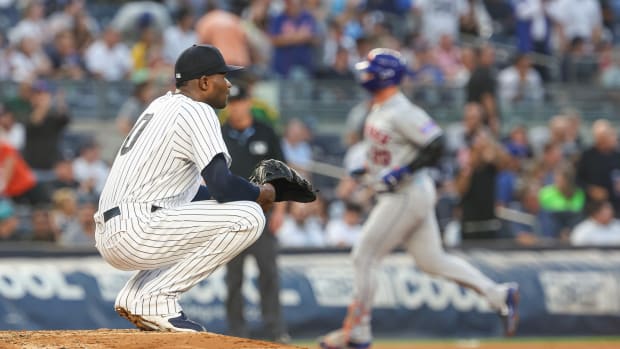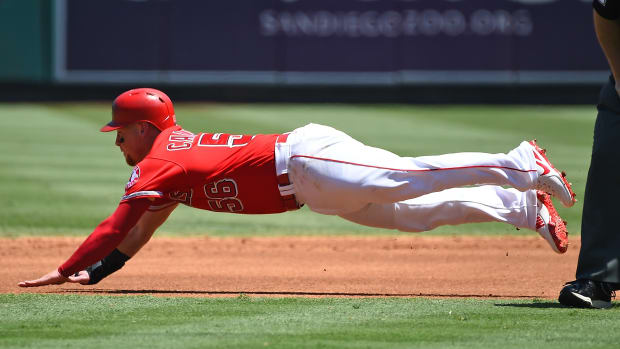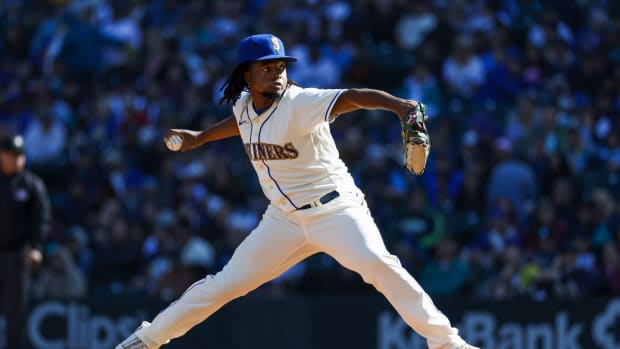Ballpark Quirks: Splashing down in San Francisco's McCovey Cove at AT&T Park
Ballpark Quirks: Splashing down in San Francisco's McCovey Cove at AT&T Park
Ballpark Quirks is a series on the distinctive features and oddities that make up each of MLB’s 30 parks. Today’s pick: AT&T Park and McCovey Cove.
AT&T Park fits snug right up to China Basin, or rather, McCovey Cove, one of the closest proximities to a body of water of any professional sports stadium. And by right snug, we mean it: It's just a 27-foot-wide sidewalk separating the lapping water from the nearly 42,000-seat stadium that opened in 2000.
Getting close to the cove was more than just a site constraint issue, though. It was a desire to embrace the water and play up Willie McCovey’s tie with San Francisco. In the early days of Candlestick Park, before rightfield was built out to match the height of the rest of the stadium in the early 1970s, McCovey spent the 1960s blasting home runs out of the park over the small rightfield bleacher section. Sure, even “Stretch” couldn’t get near the water at Candlestick, but he would have had plenty of water-bound balls if China Basin had been in play.
NEWCOMB: Ballpark Quirks: How Fenway Park's iconic Green Monster was born
Joe Spear, an architect with Populous and the designer of AT&T Park, told SI.com that early in the process, even before the site was selected from the three the city proposed, he knew the 13 acres would provide some challenges, “but it would be worth it if you were on the water.”
“San Francisco Bay is such an iconic thing,” he said. “From before we selected the site, water played its part in what this design would become.”
The brick outfield fence at AT&T Park, just 309 feet at the foul pole before angling sharply toward centerfield along the water’s line all the way to 421 feet, rises 25 feet. Fenced-off arches in the fence open up a view into the park. But early plans called for only a 12-foot-tall wall. That changed due to multiple factors. First off, the city required the port walk to remain open to the public, so Spear suggested arches to allow a free look into the outfield, which the Giants agreed to without hesitation.
Spear’s early designs called for a walkway across the top of a shorter wall, but the team’s owners wanted seating all the way around the park, and adding seats pushed the fence closer to home plate. MLB told the Giants they could have the short fence if they raised the wall, and a compromise was met.
NEWCOMB: Ballpark Quirks: Taking a dip in Chase Field's Swimming pool
Original renderings for AT&T Park—named Pacific Bell Park when it opened—had a scoreboard along part of the rightfield wall, but that was shifted out to straightaway centerfield later. Spear says club officials wanted all seats to enjoy a view toward the bay and the Bay Bridge, but Spear knew a scoreboard in rightfield would be tough to see during day games. He was able to reposition it to keep views intact and open rightfield for “splash hits,” with 60-plus balls that have now bobbed in the basin off a Giants player's bat.
With a digital sign hanging off the brick inside the stadium tracking each of these hits, nestling the stadium as close to the water as possible made for a quirk designed to give the park a singular feature and a marketing tool. Plus, how much fun is it to see a ball sail right out of a stadium and splash in water?
But having splash hits at all almost hit the drawing board floor. Spear says that during the design process, a marketing expert suggested turning the entire field 180 degrees to face the seating bowl toward the city’s skyline and place the water under the grandstand, opening up waterfront retail. But a microclimate analysis of that configuration came back saying the repositioning was the only possible layout that would make watching a game even less comfortable for fans than the already frigid Candlestick Park. “I was very relieved,” Spear said, “and we never looked back.”
Embracing all things water from that point on meant nestling AT&T Park next to McCovey Cove, as snug a fit as you’ll see.
Tim Newcomb covers stadiums, design and gear for Sports Illustrated. Follow him on Twitter at @tdnewcomb.






































